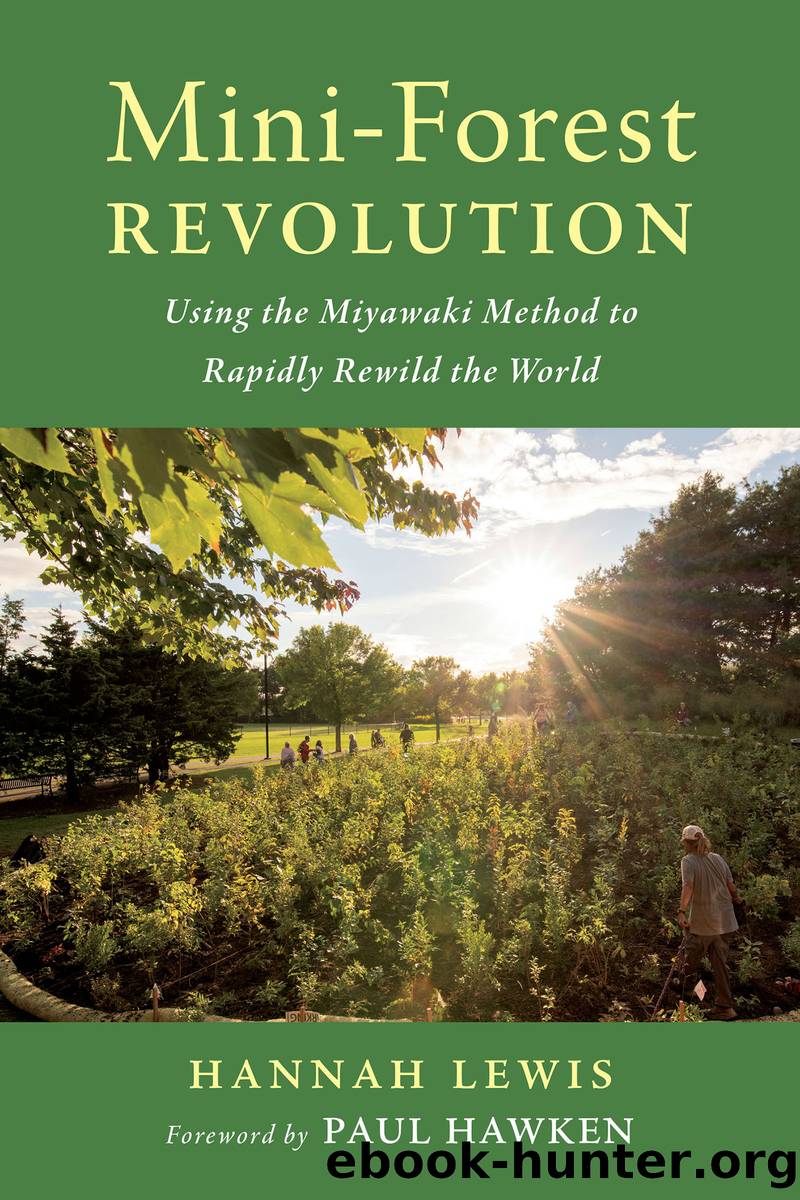Mini-Forest Revolution by Hannah Lewis

Author:Hannah Lewis
Language: eng
Format: epub
Publisher: Chelsea Green Publishing
* * *
One afternoon in 2020, about a year after Dada and team planted Beirutâs RiverLESS Forest, Dada had just left the office of his Beirut architecture firm and was in the underground parking lot when a stockpile of ammonium nitrate exploded at the port a mile away. The blast shattered the windows of his office and trapped him under a gypsum ceiling, which fell in a sheet on his back as he leaned over his toddler to shelter her from the falling rubble. The pair was stuck for about twenty-five minutes before parking attendants managed to clear open a space for Dadaâs child to emerge; he then slid out on his back from underneath the pile.
Dada was badly hurt, but he could walk. He eventually made his way to a hospital, where he was put in a back brace. He was among at least 6,500 people to have been injured in the blast, which was not intentional, but rather the outcome of government negligence. More than 200 people died and 300,000 lost their homes; others lost their businesses. Thoughts of COVID-19 faded far into the background as people poured into the hospitals that remained standing; some hospitals had been destroyed by the blast.
Fluffy toxic clouds lingered for days, Dada said, and the ground was covered in 800,000 tons of rubble, which the UN reported was likely to contain hazardous chemicals.4 âItâs been so emotionally draining,â he said. People are traumatized, he added, even those who were not directly affected by the blast, but had family members who were. Several months later, loud noises still triggered feelings of trauma for many. âEveryone feels violated,â he said. A year later, nobody had yet been held accountable.
As he himself recovered physically, Dada thought about how to help others put their lives back together. âI really believe in nature healing people,â he said. Thus, he came up with the idea to plant a forest as a âliving memorialâ in a neighborhood affected by the blast. But rather than dwelling on the past, a native forest memorial would look to the future. âWe can heal the land damaged by the explosion and urbanization,â Dada said, âwhile the land heals us through the act of planting.â
His original plan was to plant a large area of at least 400 to 500 m2 (4,300 to 5,400 ft.2) near the epicenter of the blast, and to collaborate with mental health providers to facilitate nature-based therapy for people suffering from trauma. By planting and then tending the trees over the couple of years it takes a Miyawaki mini-forest to become self-sufficient, the participating community would simultaneously strengthen their own inner resources.
Because the explosion site at the port is in the city center, where land is expensive, no terrain of this size became available. Instead, Dada found a public park that appeared to have been abandoned in a neighborhood a mile from the epicenterâit contained dead trees, shrubs, and grass; three broken water fountains; and lots of litter. Collaborating with
Download
This site does not store any files on its server. We only index and link to content provided by other sites. Please contact the content providers to delete copyright contents if any and email us, we'll remove relevant links or contents immediately.
Turbulence by E. J. Noyes(7942)
The Thirst by Nesbo Jo(6832)
Gerald's Game by Stephen King(4584)
Be in a Treehouse by Pete Nelson(3954)
Marijuana Grower's Handbook by Ed Rosenthal(3623)
The Sprouting Book by Ann Wigmore(3546)
The Red Files by Lee Winter(3368)
The Remains of the Day by Kazuo Ishiguro(3296)
Sharp Objects: A Novel by Gillian Flynn(2958)
Christian (The Protectors Book 1) by L. Ann Marie(2656)
Organic Mushroom Farming and Mycoremediation by Tradd Cotter(2631)
The Culinary Herbal by Susan Belsinger(2433)
Stone Building by Kevin Gardner(2353)
The Starter Garden Handbook by Alice Mary Alvrez(2285)
Lilac Girls by Martha Hall Kelly(2258)
The Unlikely Pilgrimage of Harold Fry by Rachel Joyce(2222)
The Lean Farm Guide to Growing Vegetables: More In-Depth Lean Techniques for Efficient Organic Production by Ben Hartman(2099)
Urban Farming by Thomas Fox(2063)
Backyard Woodland by Josh VanBrakle(1896)
